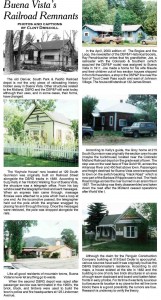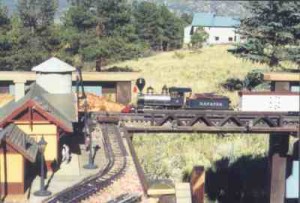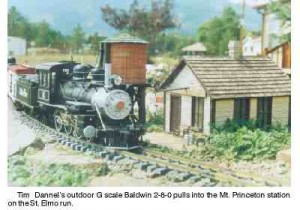Review by Virginia M. Simmons
Penitentes – January 2004 – Colorado Central Magazine
Land of the Penitentes Land of Tradition
by Ruben.E. Archuleta
Privately printed, Pueblo, CO, 2003
ISBN 0-9742840-0-9
As we push our shopping carts through the supermarket, it may seem as if most of us look, dress, eat, entertain ourselves, and think pretty much alike, but a quick look at Ruben Archuleta’s book reveals that some hearts in southern Colorado and northern New Mexico still march privately to a different matraca. [Glossary: Matraca — wooden noisemaker, clapper.]
A retired chief of Pueblo’s police department, Archuleta has published a unique collection of material about the Penitentes in this book. [Glossary: Penitente — a member of the Hispanic religious Brotherhood.]
Today, the Penitentes, who were once numerous in the San Luis Valley, on Colorado’s Front Range, and in northern New Mexico, are becoming fewer and fewer. Because they tended to be silent about their brotherhood, information about them is disproportionately scarce. Several academic books and articles by reputable researchers and writers do exist, but the general public and even Archuleta himself seem not to have read many of them.
No matter! Archuleta set out to do what only a lucky few have done. He wanted to interview people, to see some moradas [Glossary: Morada — Penitente’s place of worship, meeting place] and paraphernalia, to gather documents and records, to make photographs, and to assemble his evidence between the covers of a book.
He had the advantages of speaking Spanish and of having grown up at Antonito in the home of a grandfather who was a leader in one of the moradas. Doors opened to him, and he treated the aging members with the respect they deserve. In a Foreword by Colorado Attorney General Ken Salazar, reminiscences about practices he saw as a boy in the San Luis Valley are filled with similar respect and pride in this heritage.
Archuleta offers his readers rare material pertaining to the culture of the Penitentes. There are many photographs of objects used in rites and rituals, descriptions of penitential observances, verses in Spanish and English for hymns and prayers, even a journal from one of the moradas, which is in untranslated Spanish.
There are Lenten recipes and some descriptions of the Penitente’s social functions in villages. A few moradas, though far from all of them, are located and described. Oddly, the SPMDTU (Sociedad Proteccion Mutua de Trabajadores Unidas) is discussed, although this association was not a Penitente organization.
In other words, the volume is a miscellaneous collection of material, but readers and researchers will value it for its little-known picture of the Hispanic culture in our region. This book has a glossary, an index, and a table of contents, which will help readers find what they want even though Archuleta’s organization is a bit unorthodox.
The author makes no attempt to provide a history of the brotherhood and its roots in Spain, Mexico, and the northern province that became New Mexico. Neither does he discuss the Penitentes’ relationship with the 19-century Roman Catholic Church, whose remoteness encouraged the brotherhood’s growth and whose subsequent disapproval prompted the Penitentes to go underground for several decades. During that time, the public’s curiosity about some extreme practices at the moradas resulted in protective secrecy.
During the mid-l900s, with the Church’s sanction, secrecy became unnecessary. But mystery still surrounded the moradas in the minds of the public, which looks for thrills whether they exist or not. At one time nearly all of the towns and villages in the San Luis Valley, as well as the rural areas between them, had moradas, which were usually (but not always) recognizably constructed with adobe bricks.
Most of the “best men” of a community were members, well known by their families and neighbors to be Penitentes. After the Church gave its approval, membership increased among young, mature men. These hermanos together with their wives, hermanas who faithfully perform the functions of an auxiliary, participated openly but with a quiet humility that seems mysterious to some folks.
After I became acquainted with members, I was able to visit a few moradas and attend some activities there, so obviously the aura of secrecy is exaggerated. Theft of materials from the moradas causes vigilance, though.
Sadly, as younger Hispanos have moved away to cities or have lost the taste for strict religious discipline and piety, the active membership in moradas has waned. Only a few years ago I met a young man in Colorado Springs who had grown up in the San Luis Valley, and I asked him about his grandfather, who, I knew, had been a Penitente.
The young man had no idea what a Penitente was, until I used the word “morada,” which he recognized as being a sort of lodge, like a religious version of the Elks.
It is some of those Penitentes from the mid-1900s, now grown old, whom Archuleta was able to interview in the San Luis Valley, the Pueblo area, Trinidad, and El Rito, New Mexico. For old and young, insiders and outsiders, Hispanic, Anglo, and others, and for general and scholarly readers, Ruben Archuleta’s unique collection of material related to the Penitentes will be a useful book.



